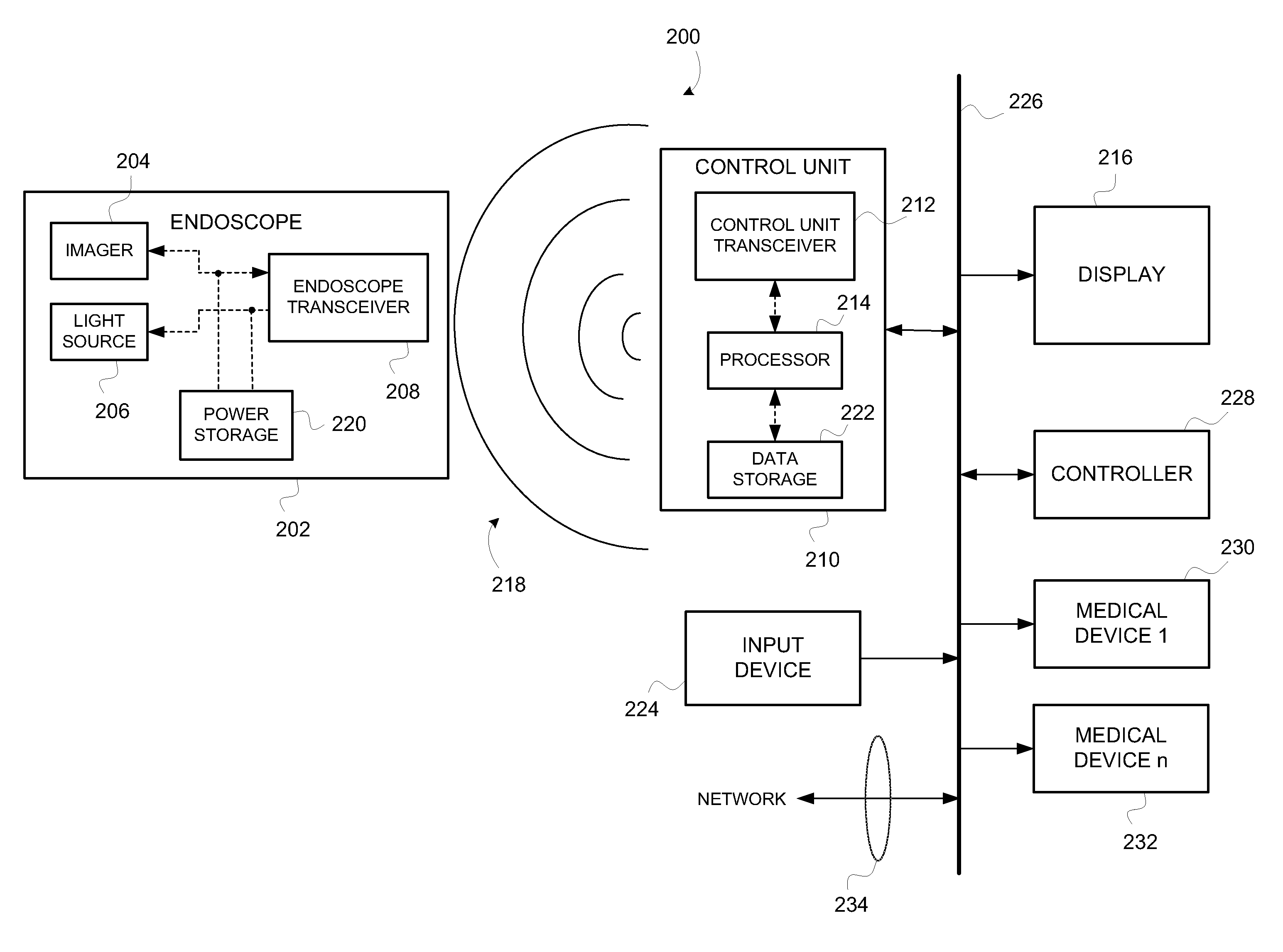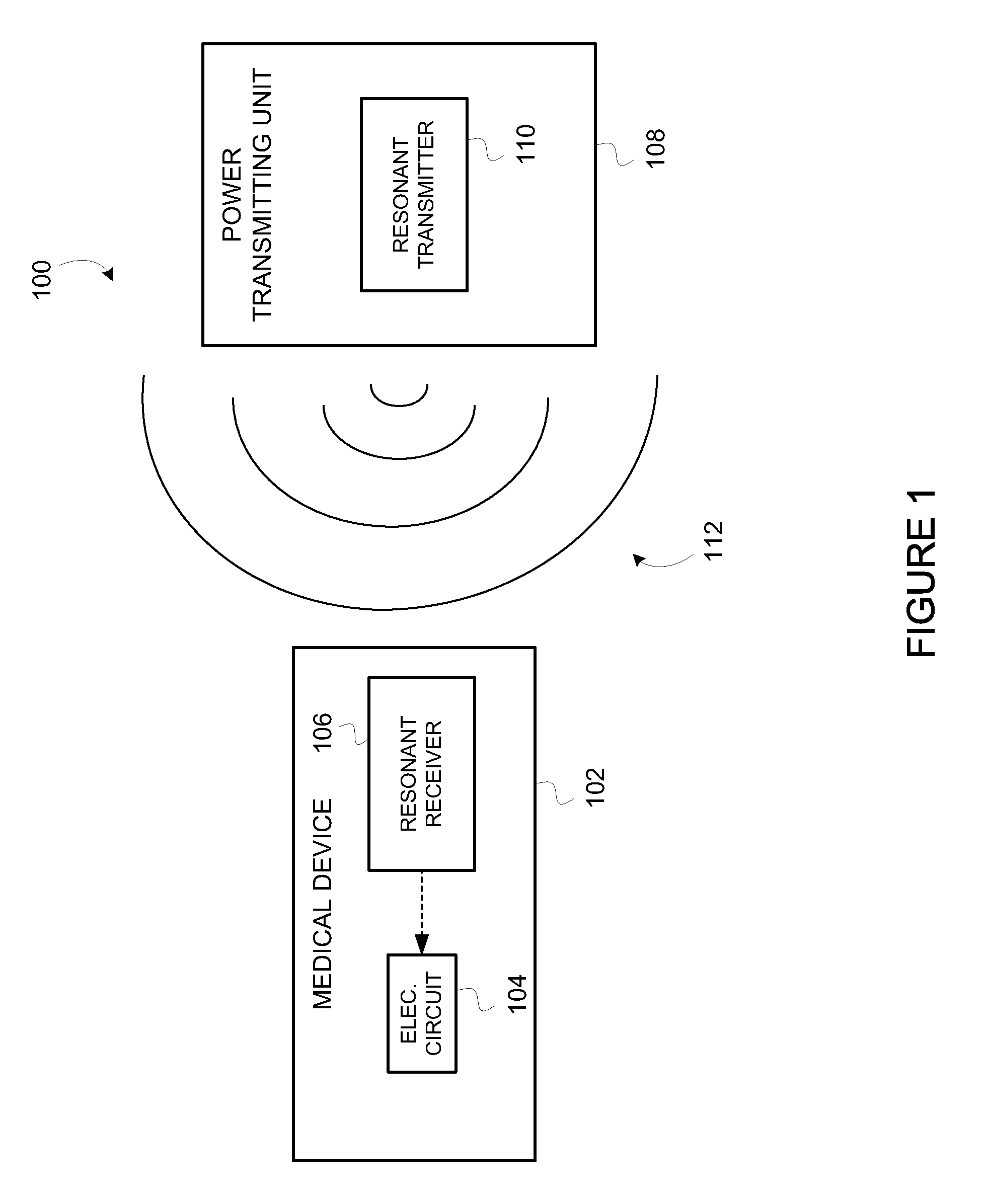Wirelessly powered medical devices and instruments
a medical device and a technology of medical devices, applied in the field of wireless medical devices, can solve the problems of large amount of cables required for operation, heavy endoscope top, and difficult maneuverability for users,
- Summary
- Abstract
- Description
- Claims
- Application Information
AI Technical Summary
Benefits of technology
Problems solved by technology
Method used
Image
Examples
Embodiment Construction
[0041]Referring now to the drawings, wherein like reference numerals designate corresponding structure throughout the views.
[0042]FIG. 1 generally depicts system 100 for providing electrical power to a medical device 102. It is contemplated that medical device 102 could comprise virtually any type of powered medical device, including but not limited to, a cutting / cauterizing tool, an irrigation / aspiration tool, a visualization tool, a recording and / or printing device and the like. Medical device 102 is provided with electronic circuit 104 and resonant receiver 106. Electronic circuit 104 may comprise any electronic / electrical circuit(s) used to operate medical device 102. Electronic circuit 104 is electrically coupled to resonant receiver 106.
[0043]Also provided in FIG. 1 is power transmitting unit 108 that includes resonant transmitter 110. It is contemplated that resonant transmitter 110 generates a resonant magnetic field 112 (depicted by the concentric lines) that transmits from...
PUM
 Login to View More
Login to View More Abstract
Description
Claims
Application Information
 Login to View More
Login to View More - R&D
- Intellectual Property
- Life Sciences
- Materials
- Tech Scout
- Unparalleled Data Quality
- Higher Quality Content
- 60% Fewer Hallucinations
Browse by: Latest US Patents, China's latest patents, Technical Efficacy Thesaurus, Application Domain, Technology Topic, Popular Technical Reports.
© 2025 PatSnap. All rights reserved.Legal|Privacy policy|Modern Slavery Act Transparency Statement|Sitemap|About US| Contact US: help@patsnap.com



